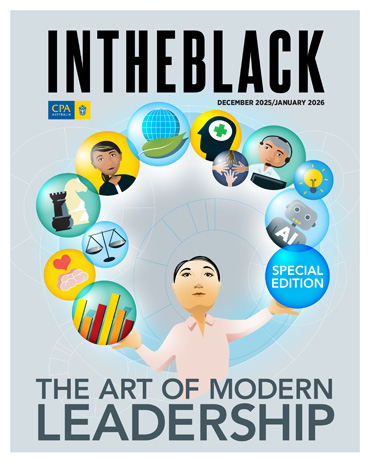Loading component...
At a glance
By Lisa Uhlman
Crafting a compelling business case involves more than presenting the numbers. A strong business case demonstrates potential return on investment, but at its core, it is about persuasion — presenting a narrative that helps decision-makers grasp the full scope of a problem and buy into the proposed solution.
Yet many business cases rely too heavily on financials and deliverables to do the persuasive work, says Tara Whitney, founder of Whitney Consulting and a specialist in business-case development. Even when these elements are clear and meticulous, technically sound proposals often fall short.
“The difference between a good business case and a great one is storytelling and context,” Whitney says. “You need to make the assessor feel and understand, ultimately, what the problem is — and how amazing the benefits are going to be.”
Go beyond the numbers
A business case, explains Whitney, is essentially a detailed pitch setting forth a value proposition for something the business wants the assessors to approve.
“A business case is really about seeking approval to do something — a project or a program — based on the argument that the benefits outweigh the cost, whether that cost is dollars, staff, resources or time,” she says.
This is where narrative plays a critical role. Assessors need more than just numbers — they need a coherent explanation of the problem, the rationale behind the chosen solution and the tangible benefits it aims to deliver.
“Companies need to get a really good understanding of the problem and the benefits — that the two go hand in hand,” she says. “If you don’t understand them intimately, both sides of it, then you’re not going to be able to tell the story.”
Focusing solely on metrics can also obscure critical delivery risks that can doom proposals. This is a pitfall Whitney has seen even in business cases written by accounting specialists who “really understood the finances”.
“But they hadn’t identified those problems, because they weren’t looking at it from a project delivery perspective — from a story perspective,” she says.
What happens when the story is missing
Whitney draws on extensive experience as both a consultant who has helped clients secure more than A$290 million in funding and as a former state government assessor of business cases. She has seen otherwise polished submissions fall flat for failing to tell a convincing story.
“It’s not enough to say, ‘We’re going to deliver a return on investment of five-to-one,’” she says. “Make me understand what the benefits are actually going to be.”
Whitney recalls providing feedback to a municipality that had repeatedly been unsuccessful in applying for a grant, finding that “technically, everything was there” in the business case.
However, “what’s missing is me feeling any emotional understanding about your town — there is no background to draw me into the problem, to understand and feel,” she says.
Whitney has seen even well-resourced accounting firms with vast technical expertise missing out by failing to prioritise the story.
“The financial parts, the budget section, the ongoing-viability section — all were great,” she says. “But when it came down to the actual project, the project planning and the story behind it, there were gaps.”
Think about what assessors want
Whether pitching to a government department, grant committee or board of directors, business case writers should adopt an investment mindset, Whitney advises. That includes asking what the assessor, as a potential investor in the project, needs to see.
A useful rhetorical exercise is to ask what one would need to know to agree to a friend’s request to borrow A$100,000.
“Give me details of exactly what it is you’re going to do, why this is such a big problem, and what the benefits and the return on investment are going to be,” Whitney says.
“But, also, explain how you are going to spend that money and what the ongoing benefits are going to be,” she says. “I’m not just going to invest my A$100,000, get A$110,000 back and nothing else happens — it’s not worth the risk, in that case.”
That logic applies equally to institutional assessors, Whitney explains. In the case of government funding, approval usually hinges on whether the project will help government save money or deliver community benefit.
“If your project doesn’t align with one of those, government won’t invest,” she says.
For public sector proposals, Whitney recommends aligning business cases with frameworks like the Western Australian Government’s Strategic Asset Management Framework, including by:
- clearly defining the problem and establishing need
- demonstrating value for money through procurement strategy
- considering multiple options before settling on a preferred solution
- proving that the benefits are sustainable and ongoing.
“You need to prove that you’ve considered all options to solve the problem — that you’ve been problem-led, not solution-led,” Whitney says.
How to avoid mistakes
For someone about to write their first high-stakes business case, getting professional help is a smart move, Whitney says. At the very least, having another set of eyes to do a review is essential.
“If you’re going to learn to write business cases, it’s always good to try doing it yourself, but having a professional eye to review it and provide feedback is the best way to learn quickly,” she says.
External review mechanisms also help prevent a common pitfall in which the writer, who is invested in the project and knows it well, assumes an equal level of knowledge on the assessor’s part.
Whitney suggests asking somebody who doesn’t know the project to review the business case, as they will “ask questions and not understand it the way you already understand it.”

